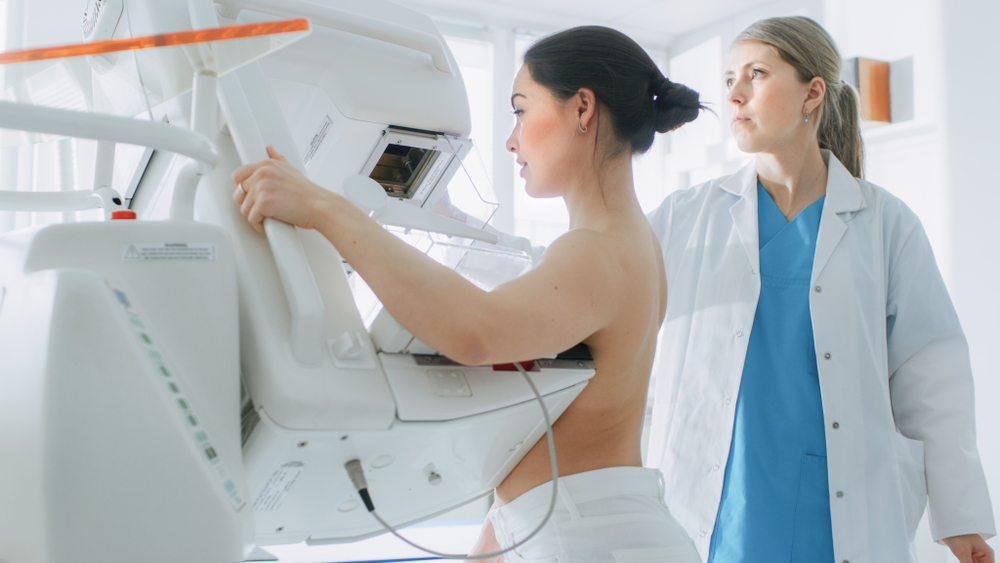Although research supports the value of breast MRI screening in conjunction with mammograms to detect breast cancer in high-risk patients, breast center professionals may not be clear about why it’s recommended for this subgroup of patients or the benefits this type of screening can provide.
For instance, a recently-published study that appeared in the Journal of Breast Imaging demonstrated knowledge gaps about breast density and the importance of breast MRI screening in this population of high-risk patients.
The study, “Radiologic Technologist and Radiologist Knowledge Gaps about Breast Density Revealed by an Online Continuing Education Course,” was built upon a breast density continuing education course geared for the radiology community that was intended to assess “provider knowledge gaps and their predictors” in this context.
Findings included concerning knowledge gaps about breast density—including three related to the use of breast MRI:
- Appropriate use of risk models: Over a third of the participants believed the Gail model should be used to identify high-risk patients to determine whether MRI or genetic testing should be recommended. However, the Tyrer-Cuzick Model (IBIS) version 8 and the Breast Cancer Surveillance Consortium (BCSC) model are those which are recommended for these purposes.
- When MRI should be recommended: Nearly 31% of physicians and nearly 48% of technologists/nonphysicians were “unaware that MRI should be recommended for women with a family history of BRCA1/BRCA2 mutations.”
- The effectiveness of tomosynthesis when compared to MRI. Participants overestimated the effectiveness of tomosynthesis, with 30% of physicians and nearly 35% of technologists/nonphysicians “believing sensitivity nearly equaled MRI.”
Why is it important to assess a patient’s risk?
One of the most important reasons for assessing a patient’s risk is to identify those women who are high-risk, since they may require a more personalized approach to breast care and supplemental screening—such as MRI.
According to a Medscape summary, American Cancer Society (ACS) criteria recommend that breast MRI screening be conducted in addition to mammography annually for women with the following risk factors:
- BRCA mutation
- “First-degree relative of BRCA carrier but untested”
- “Lifetime risk approximately 20-25% or greater, as defined by BRCAPRO or other risk models”
However, the summary notes that National Comprehensive Cancer Network (NCCN) guidelines differ and recommend annual MRI screening as follows:
- “In first-degree relatives of a BRCA carrier, but untested (encourage genetic testing before MRI)”
- “Women with lifetime risk 20% or greater, as defined by models that are largely dependent on family history. Encourage genetic testing for first-degree relatives. If testing declined, recommend MRI.”
- “Women who received radiation therapy to the chest when aged 10-30 years.”
- “May be considered for women with a history of LCIS and ALH/ADH whose lifetime risk is ≥20%.”
How does MRI benefit patients who are high-risk?
In addition to supporting a personalized approach to screening and care for high-risk women, the Medscape summary also lists advantages to using breast MRI imaging, including:
- The ability to image entire breast volume and chest wall
- A sensitivity of more than 90% to invasive carcinoma
- The ability to accurately estimate size for invasive carcinoma
- The ability to detect occult, multifocal, or residual malignancy
- And more
Citing various evidence-based resources, DenseBreast-info, Inc. also highlights the benefits of including breast MRI screening, including the fact that “Breast MRI reveals an average of 10 additional cancers per thousand women screened after mammography, even when mammography and ultrasound have been performed.”
What other benefits does breast MRI provide?
Of course, the priority for every breast center is to ensure that patient needs are met with the highest levels of quality and compassion. Appropriate MRI screening for high-risk patients supports this goal by providing a more detailed level of breast evaluation that isn’t possible with a mammogram alone.
Since breast centers are also businesses, it’s important to keep an eye on the bottom line so the doors remain open to serve patients for many years to come. In this light, MRI screening is a win-win for everyone involved: patients receive the excellence in care they deserve, and breast centers can benefit from the additional downstream revenue that’s created.
Where can breast centers find the support to get started?
With all that’s involved in determining which patients are appropriate for breast MRI for screening, it can be difficult to find a way to streamline the process to make sure no one is missed.
Fortunately, MagView helps identify these high-risk patients and manage the path to appropriate MRI screening. Our offering includes the ability to:
- Establish and grow your high-risk screening program
- Streamline collection of patient data
- Automatically identify high-risk patients
- Navigate recommendations and next steps
- Communicate risk information to both patient and provider
- Automate patient follow-up
For more information on how MagView can help your breast center identify high-risk patients and manage the path to appropriate MRI screening, contact us for a workflow consultation and risk assessment demonstration.






















![monitoring breast density shutterstock_1299510538-[Converted]](https://magview.com/wp-content/uploads/2023/05/shutterstock_1299510538-Converted.jpg)























